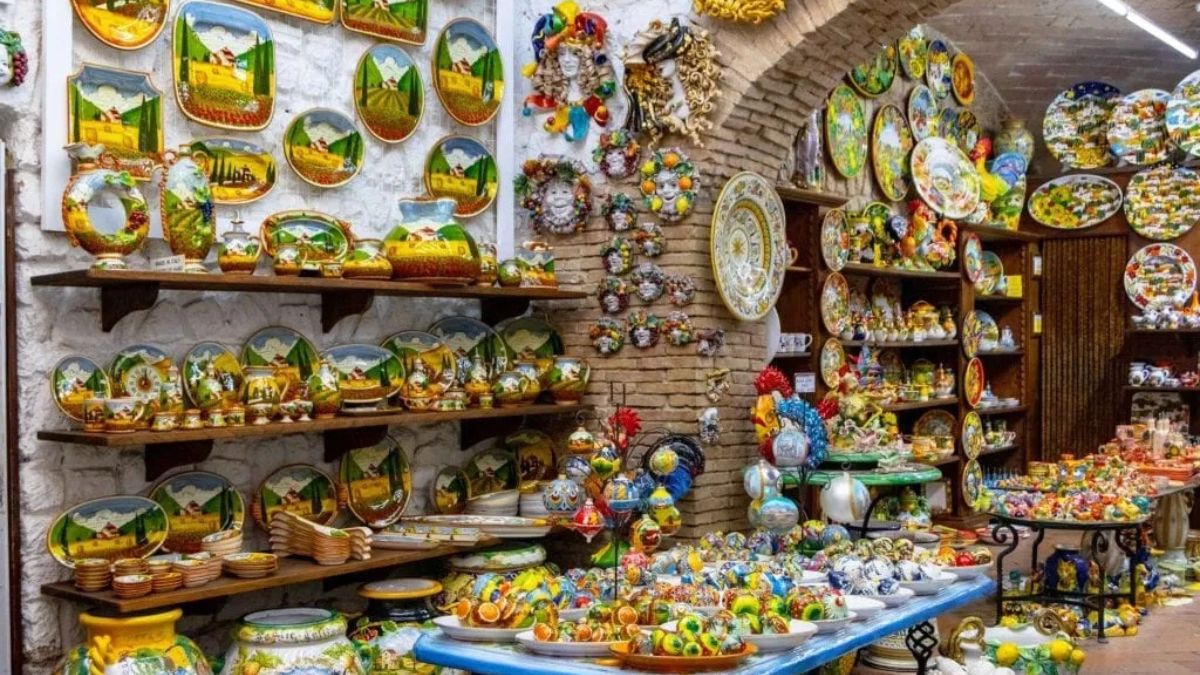Traveling allows us to document memories and moments, but to do that for many of us means purchasing souvenirs to carry back with us. The activity is rich with heritage that is associated with the advent of mass tourism and industrial manufacture, leaving us with a multitude of inexpensive mass-produced knickknacks. Though they can incite joy or sentimentality, they have a cost to the environment and the communities involved that is not apparent to us. With the growing consciousness of the need to remain sustainable and consider ethics of consumption, the question is asked: is the way we purchase travel souvenirs due to change?
The Allure of Souvenirs
Souvenirs have existed with the travel culture for a very long time. The “souvenir” name comes directly from the French word “memory,” describing the desire of humans to preserve moments. In the past, travelers of all kinds – the Victorians, the Romans – took something to commemorate their trips – a spice, a rare find, a small token. In contemporary culture, this practice persists, but nowadays it’s about the feel of the dopamine of a retail therapy purchase or the obligation of cultural gift-giving protocols like Japan’s omiyage culture of bringing back small gifts to loved ones.
However, as psychologist Vaishnavi Madarkal puts it, souvenirs do something other than call to memory; they also fill a deeper desire to feel understood, to feel heard, to feel legitimized. The act of bringing back a material representation of a location verifies us to the location.
The Hidden Dangers of Souvenir Culture
While souvenirs are innocently surfacing, their popularity have had the side effect of encouraging certain undesirable tendencies. Mass production by nations with lax labour legislation and low wage rates have had the side effect of replacing traditional hand-made produce with cost-cutting imitation work. For instance, Indigenous or made-in-the-place produce are normally fakes like boomerangs and didgeridoos of Australia, or Indian shawls of the pashmina kind. Locally made artisans cannot compete with the value-for-money fakes, forcing them to produce with low-value material and mechanized means at the cost of traditional craftsmanship.
The ethical con Is exposed: the acquisition of counterfeit material might appear to work to the locals at the cost of the artisans being supported by authenticity. Sonam Angmo of the founding team of Lena Ladakh Pashmina characterizes the demand for counterfeit material as a “vicious cycle” that is harming the locals, with artisans often being compelled to scale back their work to merely earn a wage.
A Shift Towards Conscientious Consumption
As awareness of overtourism increases and its implications are understood, the souvenir sector is increasingly being called into question by ethics debates. Many travelers are increasingly aware of their environmental and social impact while traveling, although the souvenir is frequently the area that goes unnoticed. Justin Francis of Responsible Travel points out that travelers are increasingly concerned about the origins of the products they are purchasing, but the souvenir trade is not transparent enough to allow travelers to know the origins of their purchase. The question is no longer to buy souvenirs at all, but to do so with responsibility. Instead of merely taking generic mass-produced items, considerate travelers seek authenticity. Asking the story of the product, the environmental effect of the product, and the employees involved is the way to go. Purchasing at cooperatives, fair-trade stores, and authenticity-certified products is a way to ensure that the purchase is positively contributing to the local economy while being sustainable.
For example, the like of the GI (Geographical Indication) status is granted to the indigenous Indian pashmina shawls or the indigenous Nordic version of the Sámi Doudji to the indigenous products. These measures provide the traveler with the artisans’ craftsmanship while also providing them with a feeling of belonging to the area with the value added of sustainable craftsmanship
Looking Beyond Material Souvenirs
It’s not necessarily possible to purchase a material object to keep a travel memory intact. Travel can have a souvenir of its own that endures, a cooking lesson, a portrait sketched by hand, or a body art that concentrates the substance of a journey. Numerous travelers like Srishti Tehri are enticed by the unique personal art that speaks to them directly rather than generic fare that is a “ripoff.”
In some cases, memories are held captive within intangible objects: a travel log note, a receipt receipt, or the sounds of a place. These objects do not have to occupy a shelf of their own but can instead remain vibrant memories of a visit. Good intentions also prevail: some travelers will go out of their way to ask their friends what they would like to have as a souvenir to that their gift is personal, meaningful, and well-told.
The Future of Buying Souvenirs
The future of souvenir purchasing is guaranteed to change. Tourists are increasingly taking into account the effect that their souvenir purchasing is causing to others and the environment. Purchasing something that is produced locally that is unique to the area or a lifetime memory-making activity will have the souvenir being a treasured memory to retain while also being a sustainable purchase. In the end, souvenir purchasing needs to be a way of engagement with a location and its inhabitants without perpetuating negative patterns of harm to individuals or the environment. As Justin Francis puts it, “souvenirs allow us to reclaim intimacy with commerce.” Not only do we gain a distinct meaningful item by going directly to the crafters to purchase directly, we also feel a greater sense of ethics and responsibility to the travel activity. Look at the next time you are out mall-trekking the quintessential travel souvenir the meaning of “buy a piece of a location.”



